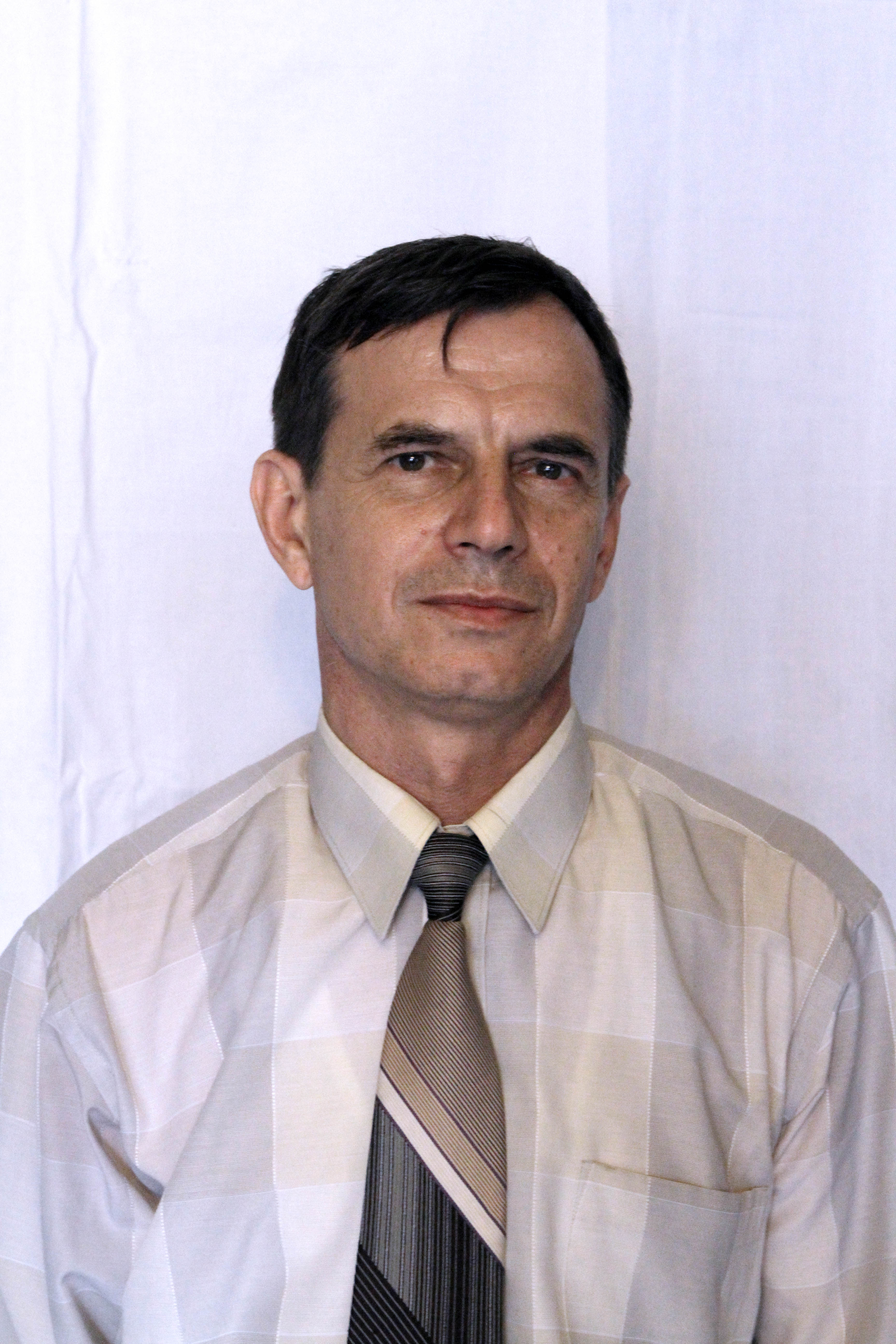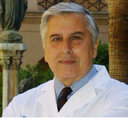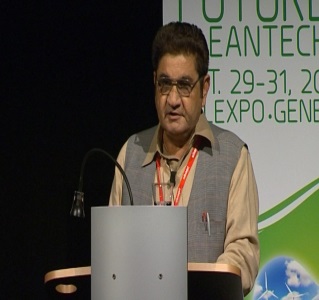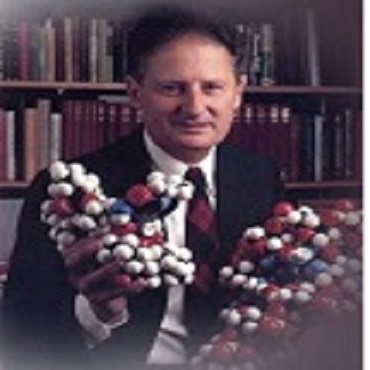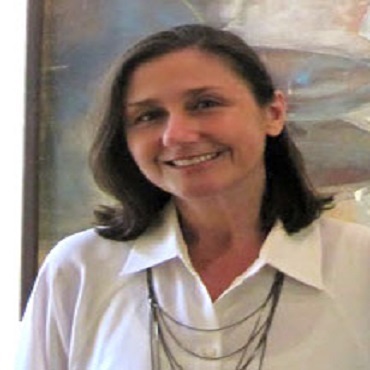Scientific Program
Keynote Session:
Title: The genes content of S.aureus strains responsible for hospital and community-Acquired infections
Biography:
Professor, MD, PhD, Lia Monica Junie, from the Microbiology Department of “Iuliu Hatieganu” University of Medicine and Pharmacy, Cluj-Napoca, Romania. She is coordinating PhD doctor’s thesis in the medicine field. She unfolds a fruitful National and International scientific activity as an experienced microbiologist, having an impressive CV. She is Member in the Board of Scientific Societies, Reviewer in many peer-reviewed journals. She coordinated research projects, published books and more than 200 scientific articles in prestigious Journals. She organized and attended numerous national, international congresses, as president, member in the Organizing Committees, Invited speaker, Keynote speaker or Chairperson. She unfolds a high level activity after years of experience in research, evaluation, teaching and administration both in hospital and education institutions.
Abstract:
MRSA strains were identified after the introduction of methicillin in therapy. Methicillin resistance is due to the acquisition of the mecA gene, which encodes PBP2a. Methicillin resistant S. aureus (MRSA) is responsible for hospital (HA-MRSA) and community-acquired infections (CA-MRSA). Toxic-shock syndrome toxin (TSST), enterotoxins (SE), exfoliatins (Ets), Panton-Valentine leukocidin (PVL) are SA pathogenicity factors. The genes for the stapylococal enterotoxins, are placed on the egc locus and are controlled by the agr regulatory genes. The purpose of our study was to investigate the genes presence (tsst, PVL, agr, SEM & SEG) among the SA isolates; to establish the prevalence of these genes, to identify the resistant phenotypes and their correlation. Materials and methods: The study included clinical isolates. The identification and the AB resistance profiles of the strains were performed by standard and automated methods (Vitek2 Compact). The genes content of the isolated strains were detected by PCR. Results: In 21,3% of the strains the genes per isolate were up to 5 and in 27,7% were 2; The tsst gene was not detected. The gene contents was: SEM & SEG (44,7%), PVL (19.1%) and agr (48,9%): agr III (27,7%), agr I (10,6%), II (6,4%) and IV (2,1% ). All arg positive strains are MRSA strains. The MRSA tested strains showed a high resistance to AB. The antibiotic sensitive MSSA strains, contain the SEM and the SEG genes. Conclusion: Following the strains antibiotic resistance profile, carrying the agr genes alone or associated with the SEM, SEG, PVL genes, we emphasize that, in our geographic area, circulate SA strains with different resistance phenotypes. There isn’t any correlation between the AB resistence phenotypes and the genes content, for suggesting their existence. This indicates the urge to detect the genes by PCR, for limiting the spread of the strains in hospitals and community.
Title: Comprehensive next generation sequencing based genomic analysis of the HBB locus
Biography:
I took my first steps in the biotechnology field; I realized that the world around me is constantly progressing. Almost daily, new developments were taking place and lab professionals must cope with the challenges of changes as they learn new techniques and adapt to new technologies.
In my opinion, one may become a true and successful person if he likes what he's doing, and I love biology labs. I have an undergraduate certificate in Biotechnology, a bachelor's degree in Biomedical Laboratories and Clinical Sciences, and a master's degree in Molecular Biology, Cell Biology and Biochemistry.
Abstract:
Hereditary diseases are common in Saudi Arabia. Such diseases include Sickle Cell Anaemia and Thalassemia. Recent epidemiological studies report an alarming increase in the prevalence of hereditary blood disorders in Saudi Arabia. The majority of these positive results were in carriers of sickle-cell disease and β-thalassemia. Most of these diseases causing variants are located on chromosome 11 (p15.4) in the HBB gene.
Title: The mutational burden of targeted genes significantly correlated with overall survival after targeted therapy in metastatic renal cell carcinoma
Biography:
SH Kim has completed his MD at the age of 30 years from Seoul National University of Medicine, Seoul, Korea and postdoctoral studies from National Cancer Center, Goyang, Korea and Seoul National University of Medicine, Seoul , Korea. He is the Clinical Staff and Associate Researcher of director of Jinsoo Chung, Prostate Cancer Center, National Cancer Center, Goyang, Korea. He has published more than 30 papers in reputed journals.
Abstract:
This study aimed to find the correlation between tumor mutation burden and systemic first line therapeutic response in metastatic tissue samples from patients with metastatic renal cell carcinoma (mRCC).
Between 2005 and 2017, 168 triplet-tissue block samples (with at least one tissue block having passed their quality checks) from 56 mRCC patients were selected for targeted gene sequencing (TGS) using the 88 targeted genes from the National Cancer Center, Korea (NCC) kidney cancer panel. The patients’ medical records, including therapeutic responsive profiles with overall survival (OS) to first-line targeted therapy, were evaluated with the mutational burden of triplet tissue samples using 88 TGS. The OS was defined as the time interval between the diagnosis of metastasis and death. A few significant target genes associated with therapeutic response towards targeted therapy were identified after comparing the mutational burden of positive for all three blocks and one or two positive blocks (p-value < 0.05).
The median PFS for the first-line targeted therapy and OS were 8.7 and 42 months, respectively. MSKCC and Heng risk criteria showed 28.9/65.8/5.3% and 26,3/57.9/15.8% for favorable, intermediate, and poor risk groups, respectively. Also, 55.3% and 52.6% patients received metastatectomy and nephrectomy, respectively. The clinical T stage comprised of T1 26.8%, T2 16.1%, T3 8.9%, T4 1.8%, and Tx 46.4% and N stage of 26.3% of N1. The histopathology showed 50.0%, 1.8%, and 48.2% of clear, non-clear, and unknown cells, respectively.
Eighteen (32.1%) patients had all triplet blocks passed for quality check, whereas 21 (37.5%) and 17 (30.4%) patients had two or one passed tissue blocks, respectively. Among the 18 patients with triplet-block, TP53, URB4, PTK2, and SGO2 genes had significant discrimination power for OS on comparing their mutational burden in the three blocks positive group (N=7) and two or fewer blocks positive groups (N=11) (p<0.05).
Among the 39 patients with either doublet or triplet blocks passed for quality check, TP53, URB1, PTK2, SGO2, BRAF, NEDD4, PDXDC1, CDH1, FGFR2, RET, RUNX1, and SDHB genes had significant discrimination power for DFS when comparing their mutational burden in the three blocks positive group (N=7) and two or fewer blocks positive groups (N=14) (p<0.01).
Title: Transcriptional regulation of the genes involved in skin-Regeneration using protein delivery
Biography:
Jee-Eun Yan Department of Biotechnology, College of Life science and Biotechnology, Yonsei University, Seoul, Republic of Korea
Master’s course in Biotechnology
Abstract:
Photoaging caused by UVB-irradiation leads to extracellular matrix damage. Most of the skin aging phenomenon is due to the loss of collagen and elastin fibers in dermal layer. ICE-1 and ICE-2 are important transcription factors involved in type â… collagen synthesis. To increase type â… collagen synthesis by regulating the activity of these transcription factors, we designed the intranuclear transcription modulation domains (TMD) of ICE-1 and ICE-2 which can be delivered effectively into the nucleus by being conjugated with protein transduction domain (PTD). Overexpressed ICE-1 and ICE-2 gene through transient transfection and treatment of purified recombinant proteins, pICE-1and pICE-2 upregulated type â… collagen synthesis on UVB-damaged human dermal fibroblast. In conclusion, transcriptional regulation of type â… collagen gene by using transcription modulation domains of ICE-1 and ICE-2 may have a significant anti-photoaging effects in human dermal fibroblast
Title: Automatic spot search and colour classification in ELISpot assay
Biography:
Sergei S. Zadorozhnyy. Born 1954, graduated Moscow State University in 1977, and received PhD degree in 1990. Senior Instructor at the Moscow State University, Scientific interests: analysis and interpretation of experimental data, image processing
Abstract:
Accuracy of spot detection and classification plays a critical role in the analysis of ELISPOT data. Differences in staining intensities of spots and their morphological variations make it difficult developing a reliable software application. We developed an image recognition method allowing the automatic detection and classification of round objects (spots) on ELISPOT images independently of the registration conditions. The emphasis is done on objects of elliptical shape, which is typical for a wide range of spots. Since it is required to analyze both monochrome and bicolor objects, we developed the method of object subdivision into groups according of their color attributes.
It is known that identical objects can look dramatically different depending on illumination conditions and optical characteristics of objects. This hinders the analysis and interpretation of the objects when image processing must be independent of its registration conditions. Morphological image analysis methods proved their efficiency for solving such problems,
Mathematical notion of the form comprises the foundation of such methods. The form (e.g., spot shape) is the maximum invariant of image transformations under various registration conditions. That is why the form is defined not only by the analyzed object and by the scene it is on, but is also connected with the model of scene (or object) registration.
In some practical cases, the profiles of objects are predefined. For example, the spots in ELISPOT assay (including dual-color ELISPOT assays) are either round or have a concentric profile. This makes it possible to solve a variety of application problems related to detecting and classifying such objects.
Morphological image analysis combined with the image recognition method allows automatic detection and counting a spots on ELISPOT images with two spots types, independently of the registration conditions and I will present the software what apply it.
Title: About the etiology of Schizophrenia lecture to residents in psychiatry
Biography:
Segundo Mesa Castillo. As Specialist in Neurology, he worked for 10 years in the Institute of Neurology of Havana, Cuba. He has worked in Electron Microscopic Studies on Schizophrenia for 32 years. He was awarded with the International Price of the Stanley Foundation Award Program and for the Professional Committee to work as a fellowship position in the Laboratory of the Central Nervous System Studies, National Institute of Neurological Diseases and Stroke under Dr. Joseph Gibbs for a period of 6 months, National Institute of Health, Bethesda, Maryland, Washington D.C. USA, June 5, 1990. At present he is member of the Scientific Board of the Psychiatric Hospital of Havana and give lectures to residents in psychiatry.
Abstract:
There is increasing evidences that favor the prenatal beginning of schizophrenia. These evidences point toward intra-uterine environmental factors that act specifically during the second pregnancy trimester producing a direct damage of the brain of the fetus [1]. The current available technology doesn't allow observing what is happening at cellular level since the human brain is not exposed to a direct analysis in that stage of the life in subjects at high risk of developing schizophrenia. Methods. In 1977 we began a direct electron microscopic research of the brain of fetuses at high risk from schizophrenic mothers in order to finding differences at cellular level in relation to controls. Results. In these studies we have observed within the nuclei of neurons the presence of complete and incomplete viral particles that reacted in positive form with antibodies to herpes simplex hominis type I [HSV1] virus, and mitochondria alterations
Title: Ftir spectroscopy as a complementary approach to biochemical analysis of metabolites - A case example of algal biology in the analysis of storage compounds
Biography:
I am currently working as an Assistant Professor (Bioinformatics) and co-ordinator for Tsukuba Life Science Innovation Program (T-LSI) at University of Tsukuba, Japan. I received my Ph.D. from University of Tsukuba in Environment and Biomass Sciences for my research on Biosynthesis mechanisms of unique Marine-Algal lipids known as Alkenones. I also extensively worked on metabolomics using LC/GC MS and FTIR spectroscopy techniques. Prior to my Ph.D., I received a Masters degree (M.Tech) in Bioinformatics from University of Hyderabad and a Bachelors degree (B.Tech) in Biotechnology from Andhra University, India. My current interests are in Omics analysis and studying photosynthetic organisms.
Abstract:
Simple and rapid analyses of cellular components are required for monitoring metabolite production during algal growth and for optimizing culture conditions to maximize biofuel and biomass production. In this regard, Fourier Transform Infra Red (FTIR) spectroscopy is a well established technique which could be used for this purpose to study algal macromolecular compounds. Our focus is especially on marine haptophytes like Emiliania huxleyi that produce special photosynthetic products such as alkenones (a unique biofuel feedstock), coccloith specific acid-polysaccharides (AP) and other carbohydrates like low molecular mass components (LMCs), which are very useful in bio-geo chemical and physical studies. The physiological functions and metabolic profile of some of the compounds (especially alkenones) are not well known yet. Previously, the analysis of different components was done in quantitative manner by using different analytical instruments like GC-FID, Total Organic Carbon (TOC) analyzer and colorimetry (Bakku et al. 2018). However, using such techniques is a cumbersome task while working with large number of haptophyte strains or time series experiments. Therefore recently we focused to use FTIR spectroscopy as an alternate rapid approach to study haptophytes like E.huxleyi. Using this we detected new spectral information at 1705.5 cm-1 and 1151 cm-1 for rapid analysis of alkenones and APs. We also developed a semi quantification method for APs and a simple approach to monitor LMC accumulation. Comparative results showed that FTIR takes 3 fold less time and achieved approximate quantification in comparison to GC-MS or colorimetric methods (un-published data).
Title: Molecular Biology and biotechnology plays an important role in the development of health, basic need of daily life, reduction in poverty and hunger in the world.
Biography:
Mr. Muhammad Usman, Former Director General of Agricultural Research System, Government of Pakistan who retired from service after a spotless career of about 35 years with senior level experience on research and development of integrated agricultural production, industries, biotechnology and bioenergy on a sustainable way
Abstract:
The aim of presentation consist of molecular biology and biotechnology, health, daily life, poverty and hunger were studied and reported that molecular biology and bio technology is the major tool for the development of health, basic need of daily life, reduction in poverty and hunger in the world. The study reported that molecular biology is the branch of biology that deals with the structure and function of the macromolecules (e.g. proteins and nucleic acids) essential to life. The study further reported that biotechnology is the use of organisms in manufacturing processes to create products or to solve industrial or environmental problems. In other words, biotechnology is the use of the data and techniques of engineering and technology for the study and solution of problems concerning living organisms. The study reported that the science of biotechnology is an industry and can be broken down into sub disciplines called red, white, green, and blue. Red biotechnology involves medical processes such as getting organisms to produce new drugs.

Jun-Yang Liou
Institute of cellular and System Medicine, National Health Research Institutes, Zhunan, TaiwanTitle: Prognostic significance of 14-3-3 and its role in regulating tumor progression of hepatocellular carcinoma
Biography:
Jun-Yang Liou has his expertise in molecular signaling in regulating cell proliferation and differentiation. His research interests focus on these areas: (1) Role of 14-3-3 proteins and their associated downstream targets in cancer cell survival, proliferation, epithelial-mesenchymal transition, migration as well as tumor progression and metastasis of hepatocellular carcinoma. He has identified several downstream signal targets of 14-3-3 that contribute to regulate tumor progression of hepatocellular carcinoma. (2) Molecular mechanisms and signal pathways in regulating stem cell differentiation and proliferation. He has identified that inhibition of ROCK signaling contribute to neural and cardiac differentiation of mouse embryonic stem and induced pluripotent stem cells
Abstract:
14-3-3 proteins are implicated in regulating tumor progression of various types of human malignancies. We have previously reported that expression of 14-3-3ε is associated with prognostic outcomes of hepatocellular carcinoma (HCC) patients. Results from the in vitro experiments and in vivo xenograft mice model indicate that 14-3-3 proteins promote HCC cancer cell proliferation, epithelial-mesenchymal transition (EMT), cell migration, invasion and tumor growth. Overexpression of selective 14-3-3 proteins is significantly correlated with microvascular invasion, high risk of metastasis as well as worse overall survival rate of HCC patients. These results suggest that increased expression of 14-3-3 proteins play important roles in regulating HCC tumor development. We have identified several downstream factors including FAK, Par-3, Zeb-1, β-catenin, and AKR1B10 are regulated by 14-3-3 proteins in HCC. We found 14-3-3ε induces Zeb-1, thereby suppressing E-cadherin expression and promoting EMT. Our study indicated that 14-3-3ε upregulates AKR1B10 through a β-catenin-dependent mechanism and AKR1B10 is involved in promoting cancer cell proliferation and tumor growth of HCC. Moreover, we have examined the prognostic value of 14-3-3ε, MT-1 and AKR1B10 expressions in HCC. We found that 14-3-3ε positivity was significantly associated with decreased MT-1 expression in HCC. Patients with decreased MT-1 expression had worse survival rates and a higher risk of metastasis than 14-3-3ε positive HCC patients with unchanged MT-1 expression. Distinct expression patterns of 14-3-3ε/MT-1/AKR1B10 were significantly associated with the metastatic incidence and survival rates of HCC patients. Patients with negative 14-3-3ε staining in primary tumors had better prognostic outcomes. In contrast, patients with positive 14-3-3ε staining, decreased MT-1 expression and no increase in AKR1B10 expression in primary tumors had the worst overall and disease-free survival rates and the highest metastatic risk. Thus, 14-3-3ε, AKR1B10, and MT-1 act as potential prognostic biomarkers of HCC.
Title: The centers of premeltons signal the beginning and ends of genes
Biography:
Henry M. Sobell completed his studies at Brooklyn Technical High School (1948-1952), Columbia College (1952-1956), and the University of Virginia School of Medicine (1956-1960). Instead of practicing clinical medicine, he then went to the Massachusetts Institute of Technology (MIT) to join Professor Alexander Rich in the Department of Biology (1960-1965), where, as a Helen Hay Whitney Postdoctoral Fellow, he learned the technique of single crystal X-ray analysis. He then joined the Chemistry Department at the University of Rochester, having been subsequently jointly appointed to both the Chemistry and Molecular Biophysics departments (the latter at the University of Rochester School of Medicine and Dentistry), becoming a full tenured Professor in both departments (1965-1993). He is now retired and living in the Adirondacks in New York, USA.
Abstract:
Premeltons are examples of emergent structures (i.e., structural solitons) that arise spontaneously in DNA due to the presence of nonlinear excitations in its structure. They are of two kinds: B-B (or A-A) premeltons form at specific DNA-regions to nucleate site-specific DNA melting. These are stationary and, being globally nontopological, undergo breather motions that allow drugs and dyes to intercalate into DNA. B-A (or A-B) premeltons, on the other hand, are mobile, and being globally topological, act as phase-boundaries transforming B-into A- DNA during the structural phase-transition. They are not expected to undergo breather-motions. A key feature of both types of premeltons is the presence of an intermediate structural-form in their central regions (proposed as being a transition-state intermediate in DNA-melting and in the B- to A- transition), which differs from either A-or B- DNA. Called beta-DNA, this is both metastable and hyperflexible and contains an alternating sugar-puckering pattern along the polymer-backbone combined with the partial-unstacking (in its lower energy-forms) of every other base-pair. Beta-DNA is connected to either B- or to A- DNA on either side by boundaries possessing a gradation of nonlinear structural-change, these being called the kink and the antikink regions.
Title: Ligand-Directed therapy and molecular imaging based on in vivo phage display
Biography:
Renata Pasqualini received her PhD from the University of São Paulo, Brazil and completed her postdoctoral studies at Harvard University, the Dana Farber Cancer Institute and The Burnham Institute. She is the Budke Professor of Medicine, Associate Director for Translational Research and Chief of the Division of Molecular Medicine at the University of New Mexico Comprehensive Cancer Centre. She has published over 170 papers in top tier journals and has filed over 110 patents. She is an editor and reviewer for many journals, and serves on national and international review board. Today, Dr. Pasqualini is the Division Chief of the Division of Cancer Biology in the Department of Radiation Oncology at Rutgers New Jersey Medical School.
Abstract:
We have developed in vivo phage display, a functional peptide and antibody screening established in animal models and later in patients. Isolation of homing ligands enables subsequent identification of tissue-specific receptors. Systematic implementation of this strategy will lead to the construction of a comprehensive map of vascular markers in each organ, tissue, or disease, and may result in a new pharmacology.
Title: Ligand-Directed therapy and molecular imaging based on in vivo phage display
Biography:
Renata Pasqualini received her PhD from the University of São Paulo, Brazil and completed her postdoctoral studies at Harvard University, the Dana Farber Cancer Institute and The Burnham Institute. She is the Budke Professor of Medicine, Associate Director for Translational Research and Chief of the Division of Molecular Medicine at the University of New Mexico Comprehensive Cancer Centre. She has published over 170 papers in top tier journals and has filed over 110 patents. She is an editor and reviewer for many journals, and serves on national and international review board. Today, Dr. Pasqualini is the Division Chief of the Division of Cancer Biology in the Department of Radiation Oncology at Rutgers New Jersey Medical School.
Abstract:
We have developed in vivo phage display, a functional peptide and antibody screening established in animal models and later in patients. Isolation of homing ligands enables subsequent identification of tissue-specific receptors. Systematic implementation of this strategy will lead to the construction of a comprehensive map of vascular markers in each organ, tissue, or disease, and may result in a new pharmacology.





